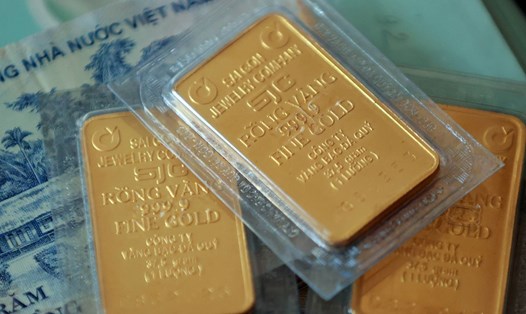From November 1, the Chinese Ministry of Finance officially canceled the value-added tax (VAT) deduction policy for gold trading enterprises. This move is expected to increase domestic gold purchase costs and affect one of the world's largest gold markets.
Accordingly, retailers will no longer be allowed to deduct VAT when selling gold purchased from the Shanghai Gold Exchange (SGE), whether selling directly or after processing. The regulation applies to both investment gold products - such as gold bars, gold bars and gold bars approved by the People's Bank of China - as well as non-investment products such as jewelry and industrial materials.
According to analysts, the removal of this incentive helps the Chinese government increase revenue in the context of slowing economic growth and a sluggish real estate market. However, that also means that domestic consumer spending on gold may increase.
Retail gold prices in China could increase as businesses no longer have tax deductions. But in the long term, the impact on world prices may not be too big, said a precious metals market expert in Singapore.
Currently, China is both the world's largest gold producer and the world's largest gold importer, and a major customer of gold. The People's Bank of China (PBoC) has continuously increased its reserves, buying an additional 2 tons in July alone, bringing the total official gold volume to about 2,300 tons. From the beginning of the year to the end of September alone, China added 21 tons of gold to its national reserves.
Flying Frisby - a London-based organization specializing in investing in markets including gold - commented that China is currently the world's largest gold producer and importer.
In the international market, gold prices are still around $4,000/ounce, after reaching a record high in early October. Despite recent minor adjustments, many fundamental factors have supported gold, including central bank purchases, monetary easing policy in the US, and prolonged geopolitical instability.

Previously, strong buying by global individual investors caused gold prices to climb rapidly, before the market showed signs of "cooliding down" with selling momentum from ETFs. Demand has also partly declined as the gold consumption festival season in India ends.
Although China's new policy may temporarily reduce domestic purchasing power, many analysts still believe that the long-term outlook for gold is still positive. If the net buying trend of central banks continues, gold prices could remain around the current highs, said an expert from consulting firm Metals Focus.
According to gold price forecasts from some financial institutions, gold prices could approach $4,500-5,000/ounce by 2026, if US interest rates fall and global risks do not cool down.
The world gold price closed last week at 4,002.93 USD/ounce (at 6:15 am on November 1, Vietnam time), up 0.32 USD, equivalent to 0.01%.
Regarding domestic gold prices, at 9:13 a.m. on November 1, the price of SJC gold bars was trading around 146.9 - 148.4 million VND/tael (buy - sell).
The price of 9999 Bao Tin Minh Chau gold rings is trading around 146.2 - 149.2 million VND/tael (buy - sell).











